Here’s a quick update to the Happy Hollow Tree post from last year at the onset of winter. How we left the tree, a tigerbark ficus:

The pic below was just after the initial styling. The above pic was after just two weeks growing. 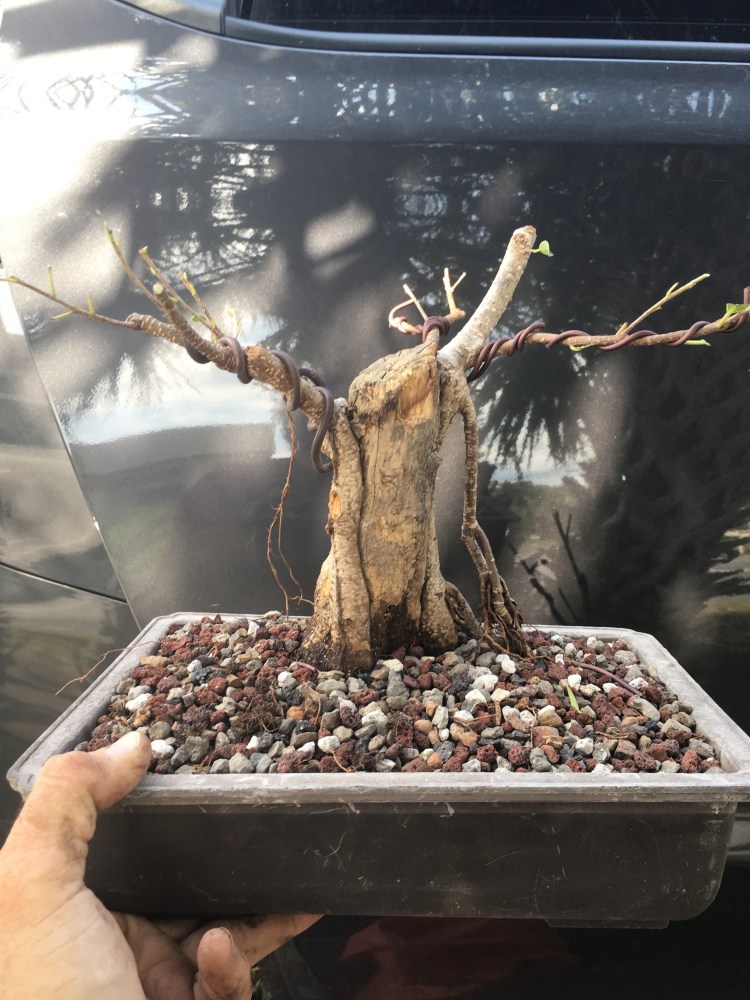
And now, after three months: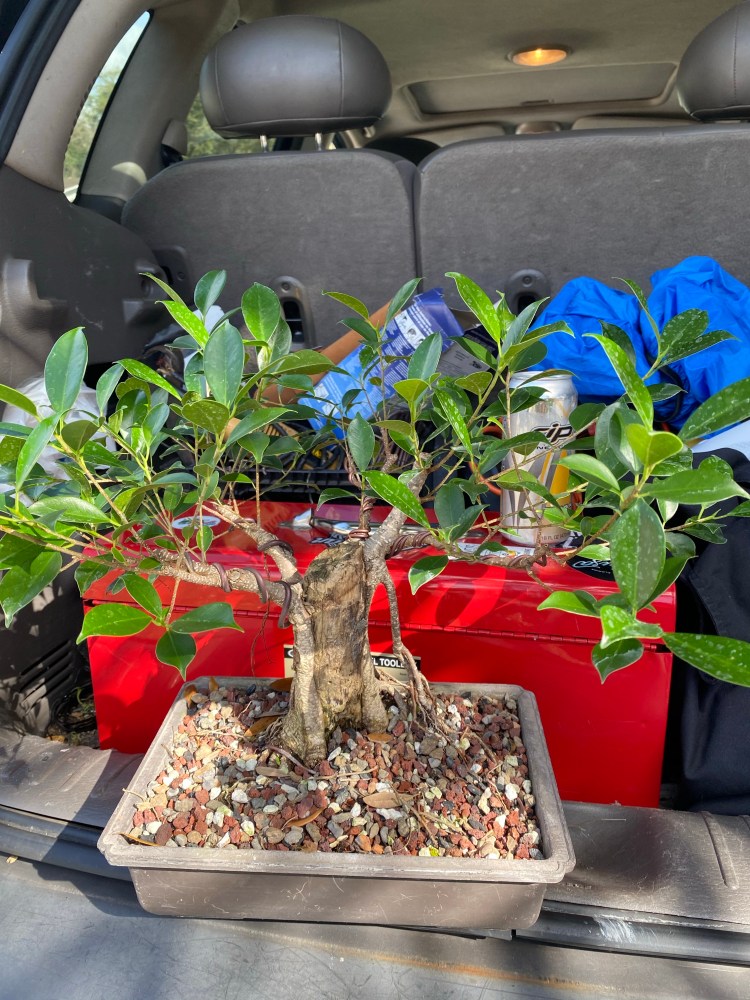
Below, three months ago:
And now: 
The purpose of the work at the onset of winter (in Florida, but you can easily do this inside, and get better results due to a more controlled environment. I saw 37f temps a few nights) was to show that you can develop trees when everyone else says they are supposed to be dormant.
The wire even cut in. 
Not too badly but it did. 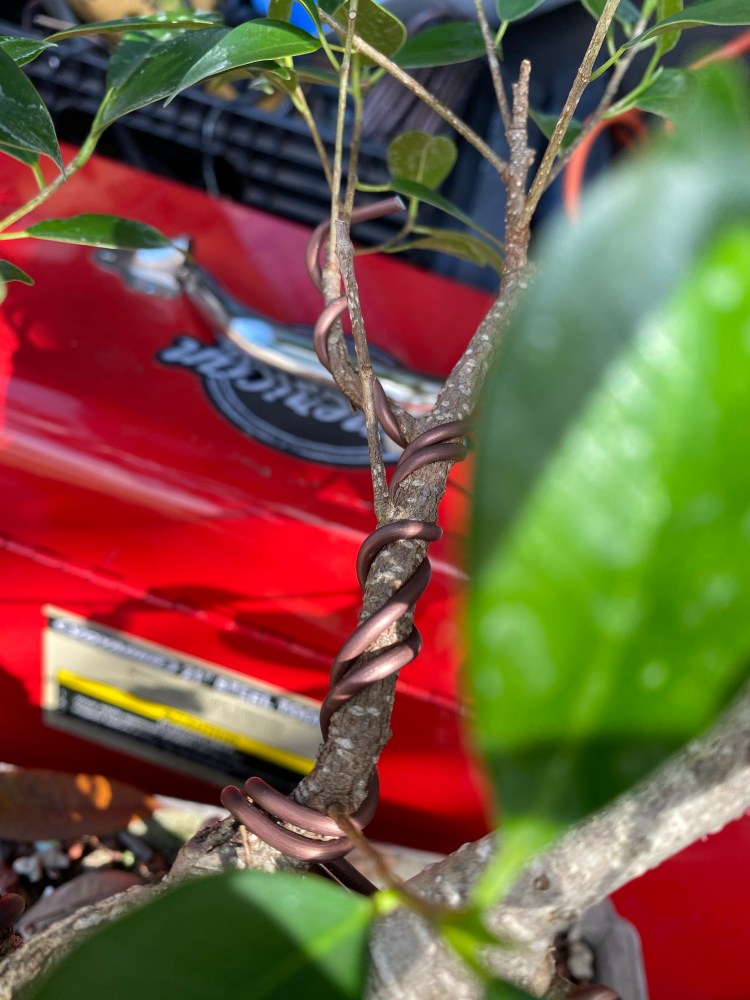
The first work will be to remove the wire. 
Here’s a bit of trivia: most call these “jin pliers”.

They’re actually for wire removal and application. 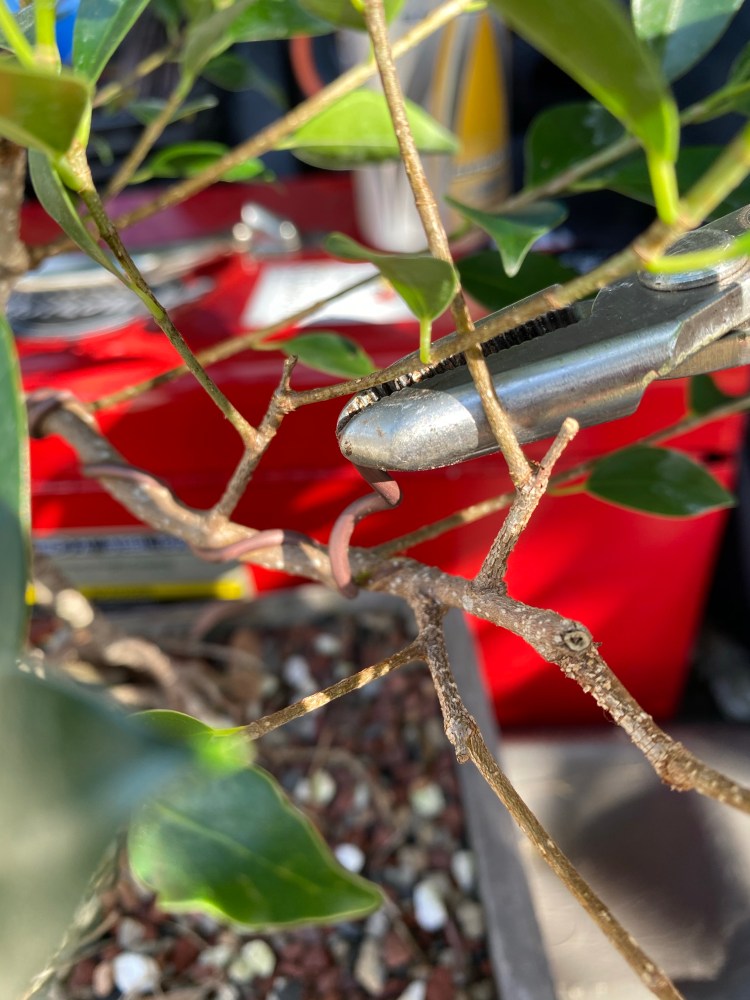 There used to be teachers in Japan and California that forced their students to use two pairs of these, never touching the wire with the hands at all.
There used to be teachers in Japan and California that forced their students to use two pairs of these, never touching the wire with the hands at all.
There’s the extent of the wire damage. Like I said, not bad. 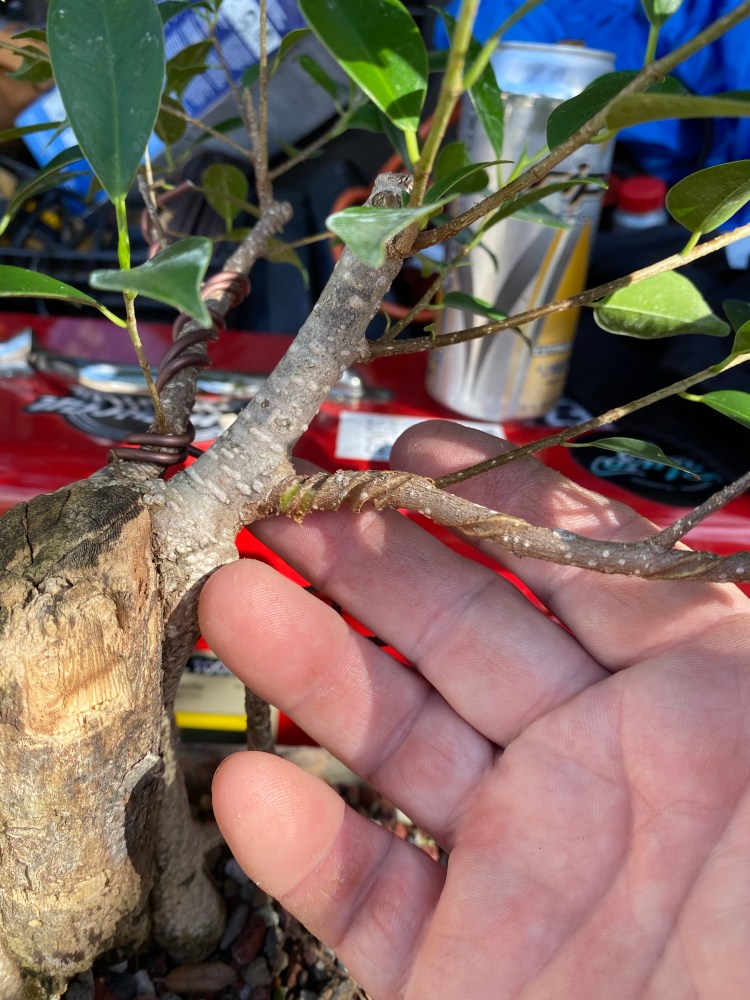
Wire off, now for sone scissor discipline. 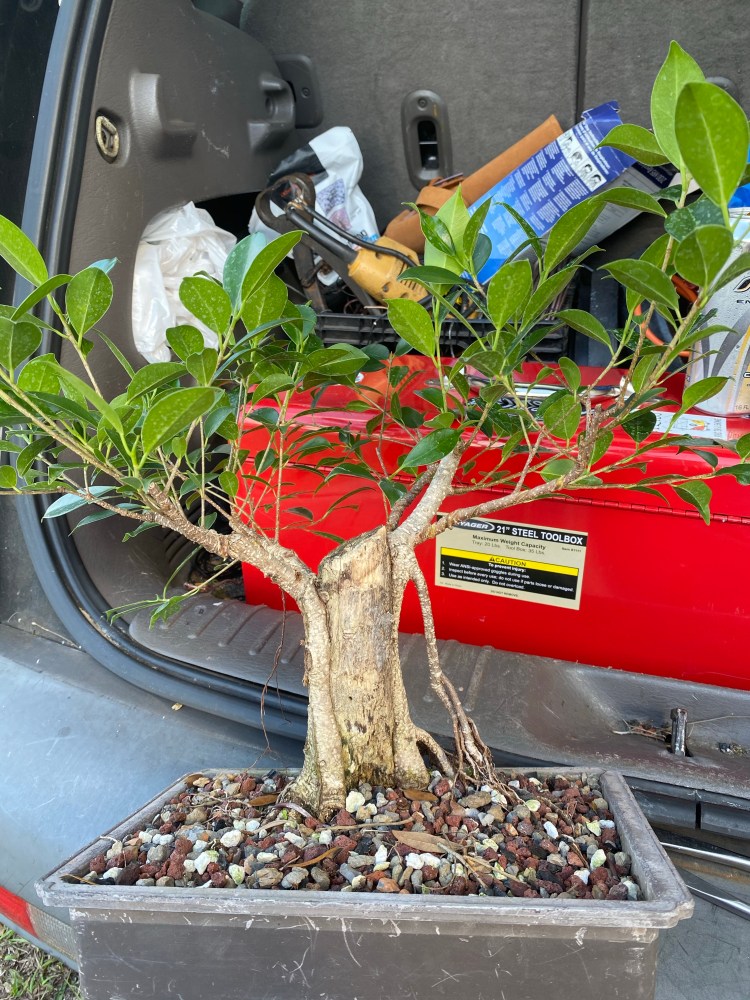
And a quick tutorial, as always. 
On the left hand branch. As you see, there are a good number of branches. 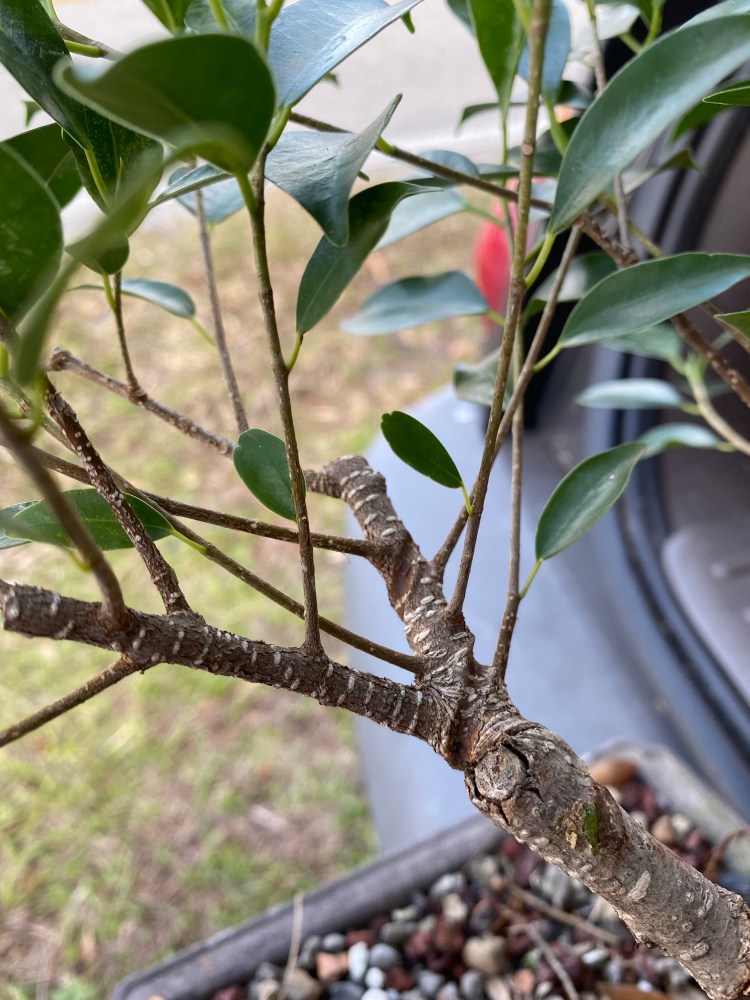
Our job is to edit out those we don’t need.
This one is too close to the branch fork. 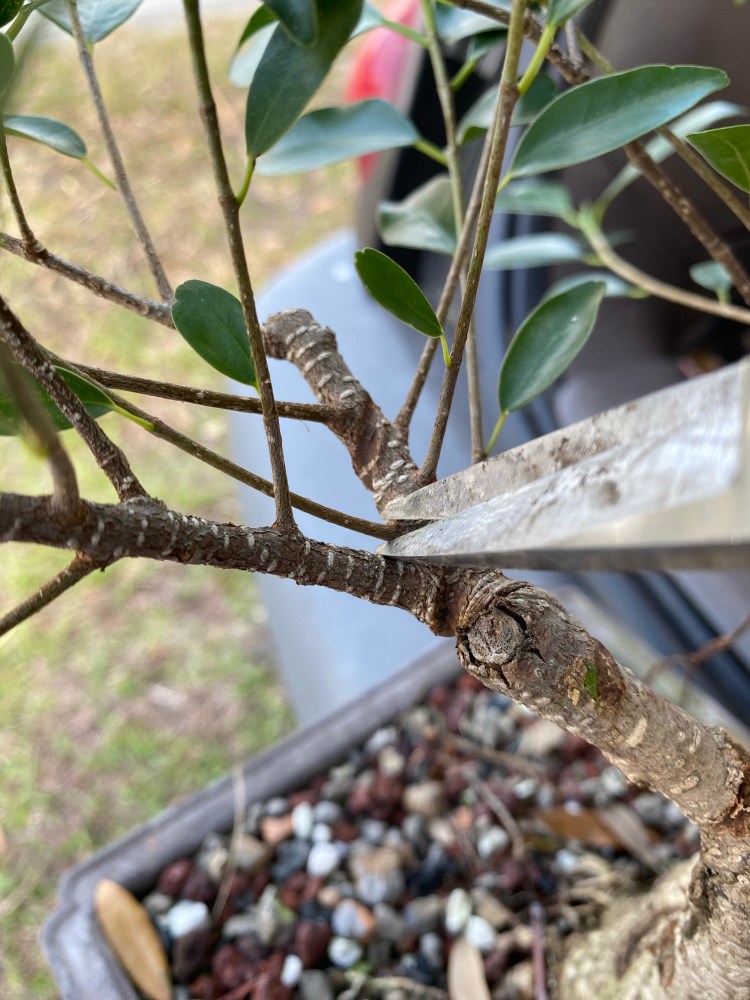
I’ll be wiring down the branch some more, so that’ll determine what’s left.

This branch is in the way 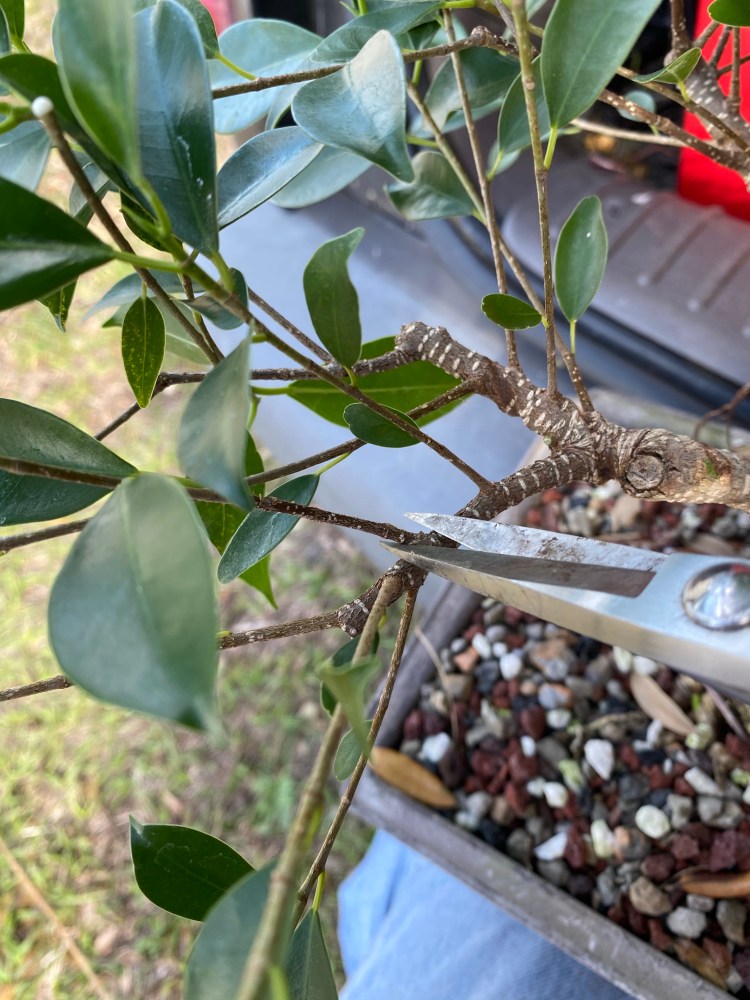
As well as this one. 
And there we go. I’ve cut some grow tips but left most in place. This makes the branch grow longer, in an effort to replace the leaves I’ve removed.
On those with the growth tips cut, the branch will replace the defoliated leaves by back budding, and growing new branches.  That’s basically the reason we prune or don’t prune. We either want a longer (and therefore thicker) branch, or to get better ramification. (For the in depth article on this, read I use some fancy words to justify my defoliation habit, go figure. )
That’s basically the reason we prune or don’t prune. We either want a longer (and therefore thicker) branch, or to get better ramification. (For the in depth article on this, read I use some fancy words to justify my defoliation habit, go figure. )
Both thicker branches (with taper, eventually) and ramification are what make us ‘believe’ that a tree is older.
Now for wire. On the scarred branches, always wire in the opposite direction of the scarring. This will mitigate the coiled texture and make the branch look gnarly.  It’s an axiom of mine that if you don’t have wire scars, you’re not using enough wire. It’s the dilettante that believes in no wire scars.
It’s an axiom of mine that if you don’t have wire scars, you’re not using enough wire. It’s the dilettante that believes in no wire scars.
Every heavily styled, and OLD bonsai I have studied, either in person or in pictures, have wire scars. Start looking closer. You’ll see them.
Anyway, before moving the branches. 
And the finished work.
 Not very impressive yet. The tree is still in serious development.
Not very impressive yet. The tree is still in serious development.
The apical branch …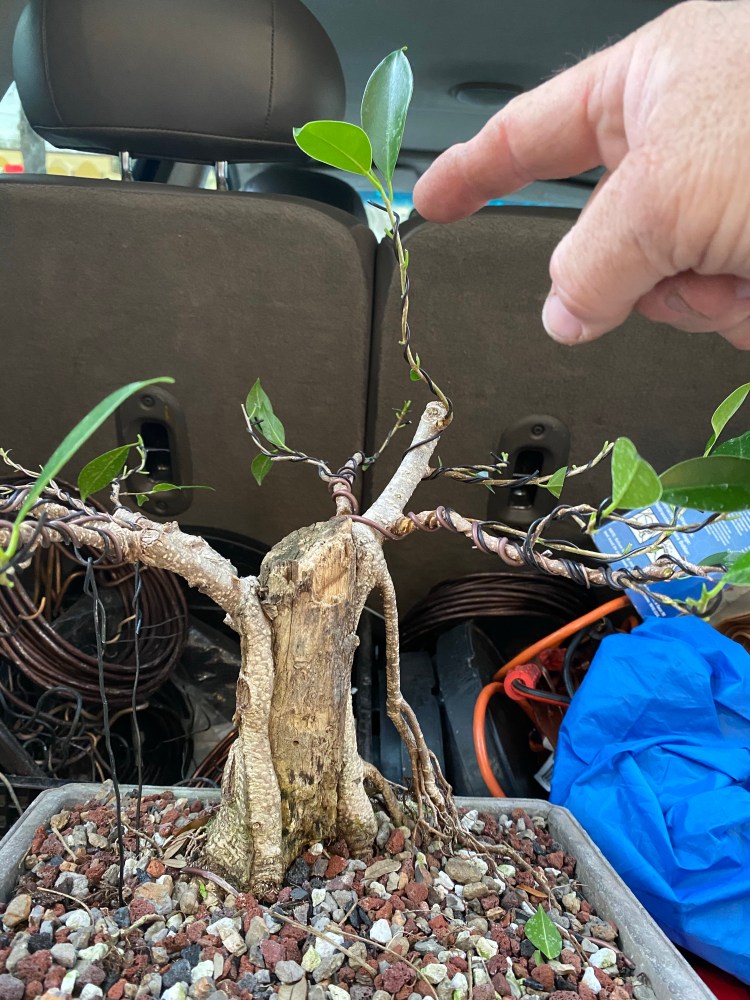
Needs to be here, over the center mad of the main trunk. And about that tall eventually.  Which means I’ll let it grow about six feet tall this year. Then chop it down.
Which means I’ll let it grow about six feet tall this year. Then chop it down.
Some guy wires to hold the big branches down. 
On the right hand branch, there was even a secondary tier of ramification to wire up.  That lesson is in the blog post Ramification: The next step
That lesson is in the blog post Ramification: The next step
And now we are ready for spring….. 
It’s Miller Time!
Hey Adam, a novice question. You said that the apical branch needs to be over the centre of the main trunk; I thought so too. This might sound silly; would repotting the tree a little deeper on the left work so it makes the apical branch a bit more upright? Or, would it unbalance the whole trunk in it’s present symmetry. Sorry, don’t know how to draw on the computer. Liz
LikeLike
That is definitely items one way to do it. But since the top needs to grow anyway, it’ll be just as easy to move it with wire.
I repotted it back in November so it’ll be a few years until I want to touch the roots again anyway
LikeLike
Thanks, you’re a lot more patient than me. I’ll let you get back to your beer.
LikeLiked by 1 person
Hi Adam. Nice post as always.
I would like to know your opinion on “rotating trees frequently”. Many books and websites tell about rotating your bonsai weekly to develop your bonsai evenly. But I find that impractical, specially her in South Florida. Now I only do it once a month. Any comments on that.
Thanks,
Diaz.
LikeLike
A tree will definitely grow with the influence of the light source’s direction. So rotation can play a part in a trees development. Especially if the tree grows up against a wall or fence.
You can get really advanced and use it to develop a branch that’s lacking.
Now, some trees grow towards the sun, some grow away, so you’d need to figure that out.
LikeLike
Good morning dear…. thanks for giving me important information about the Bonsai tree…
On Wed 12 Feb, 2020, 5:03 AM Adam’s Art and Bonsai Blog, wrote:
> adamaskwhy posted: “Here’s a quick update to the Happy Hollow Tree post > from last year at the onset of winter. How we left the tree, a tigerbark > ficus: The pic below was just after the initial styling. The above pic was > after just two weeks growing. And now, after three” >
LikeLike
Reblogged this on Wolf's Birding and Bonsai Blog.
LikeLike